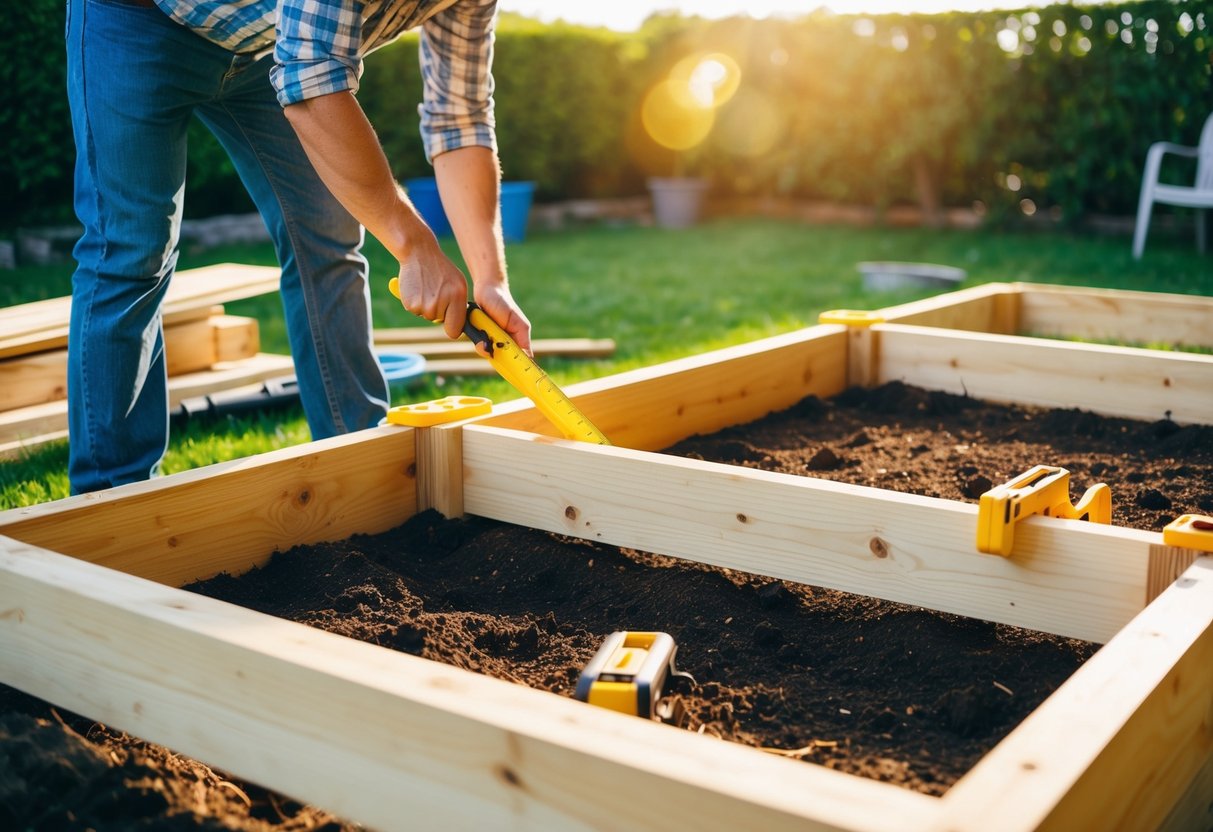DIY Raised Garden Beds: Step-by-Step Guide to a Thriving Backyard
Constructing Your Raised Beds

Creating a thriving raised garden begins with constructing robust frames and considering accessibility features to ensure longevity and ease of use. Durable materials and thoughtful design play crucial roles in achieving these goals.
Building Durable and Safe Frames
When constructing frames for raised garden beds, selecting the right materials is essential. Cedar and redwood are popular choices due to their natural resistance to rot and insects. Pressure-treated lumber can also be used, but ensure it’s safe for gardening purposes, as older treatments contain harmful chemicals. Metal frames are another option, offering durability and a modern look.
Use exterior screws or galvanized bolts to assemble the frames securely. The standard height for raised garden beds ranges from 12 to 24 inches, which provides ample depth for root growth. Iin urban environments, using weather-resistant materials becomes even more critical to withstand various weather conditions.
Take care to level the ground before placing the frames to avoid tilting or water runoff issues. Line the bottom with landscape fabric to prevent weeds. Filling the structure with a mix of soil, compost, and organic matter promotes healthy plant growth and ensures water retention.
Incorporating Accessibility Features
Accessibility ensures that everyone can enjoy the benefits of raised bed gardens. Consider building beds at a height and width that are comfortable for individuals who may have limited mobility. A height of 24 inches allows for easier access without excessive bending.
Positioning the beds to provide plenty of space between them allows for wheelchair access and easy navigation. Widths should not exceed four feet to ensure the center is reachable from either side without straining. Adding sitting ledges around the perimeter offers comfortable working areas for extended gardening tasks.
Watering systems can be integrated to minimize the effort required to maintain the garden. Drip irrigation setups save time and water. For enhanced accessibility, incorporate user-friendly features that cater to the gardener’s needs, ensuring a seamless gardening experience.
Soil Considerations for Raised Beds
When preparing soil for raised garden beds, choosing the right mixture and layering materials effectively is crucial for plant health. Optimal soil quality can lead to vigorous growth and robust crops.
Mixing the Best Soil for Plant Health
Creating an ideal soil blend is essential for the success of a raised garden bed. A well-balanced mix often includes garden soil, organic raised bed soil, and compost. It is important to combine these at a ratio that supports drainage while retaining moisture. Typically, a mixture containing 60% topsoil, 30% compost, and 10% potting soil or sand is recommended.
Using quality organic materials enhances soil fertility and plant productivity. These ingredients help ensure that vegetables and flowers receive necessary nutrients. It is advisable to regularly test the soil for pH levels and nutrient content, making adjustments with appropriate soil amendments as needed.
Layering Organic Matter and Amendments
Layering contributes significantly to a thriving soil ecosystem. Placing organic materials at the right levels can improve water retention and aeration. Starting with a layer of coarse materials like small branches or straw at the bottom promotes drainage.
On top of these, adding layers of compost and high-quality organic raised bed soil is beneficial. Incorporating soil amendments such as peat moss or perlite into these layers can improve soil texture and structure. This method ensures an enriched environment where plants can access essential nutrients, fostering a healthy growing cycle in the raised bed.



